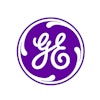A type of ultrasound contrast agent that can specifically target a receptor found on malignant tumor blood vessels is safe and could be used to diagnose cancer in humans, offering the potential to reduce unnecessary biopsies and surgeries, according to research published online recently in the Journal of Clinical Oncology.
In a phase I trial involving 24 women with ovarian tumors and 21 women with breast tumors, a group led by researchers from Stanford University used BR55 (Bracco), a type of contrast microbubble that can bind to kinase insert domain receptor (KDR), one of the key regulators of neoangiogenesis in cancer. They found that imaging signal from the ultrasound contrast agent matched well with immunochemistry results in 93% of the malignant breast lesions and 85% of the malignant ovarian lesions (JCO, March 14, 2017).
The ultrasound molecular imaging technique was well-tolerated in all patients and there were no safety concerns, according to the group, which included first author Dr. Jürgen Willmann and senior author Dr. Sanjiv "Sam" Gambhir, PhD. The researchers also noted that the bubbles remain attached to the tumors for several minutes and as long as half an hour, providing clinicians with enough time to image both breasts or ovaries without having to start over with a new injection of contrast.
The team is now moving forward with a larger phase II trial that will measure how well the ultrasound contrast method differentiates malignant from benign breast and ovarian tumors. In addition, the researchers will seek to determine how small of a tumor can be imaged with their method and will also image pancreatic tumors as well, according to a Stanford University statement.
If the study goes as hoped, the ultrasound contrast agent could improve diagnoses and reduce the number of unnecessary surgeries performed in women suspected of having breast or ovarian cancer, according to the team. Ultrasound finds a lot of breast lesions, but most of them are benign, which results in many unnecessary biopsies and surgeries.
"To decrease those unnecessary biopsies and surgeries would be a huge leap forward," Willmann said in the statement. "We could make ultrasound a highly accurate screening technology that is relatively low cost, highly available, and with no radiation."



















